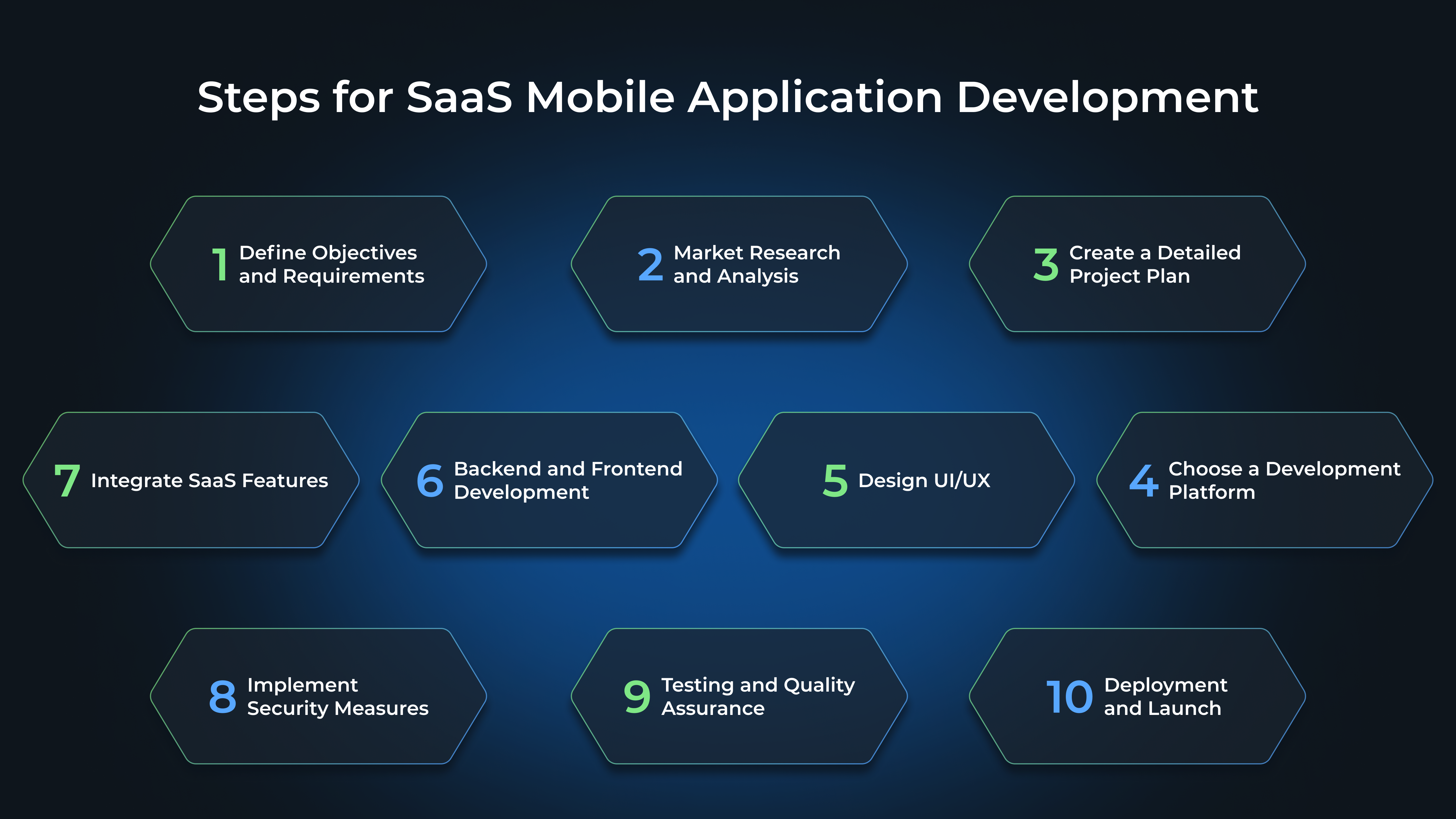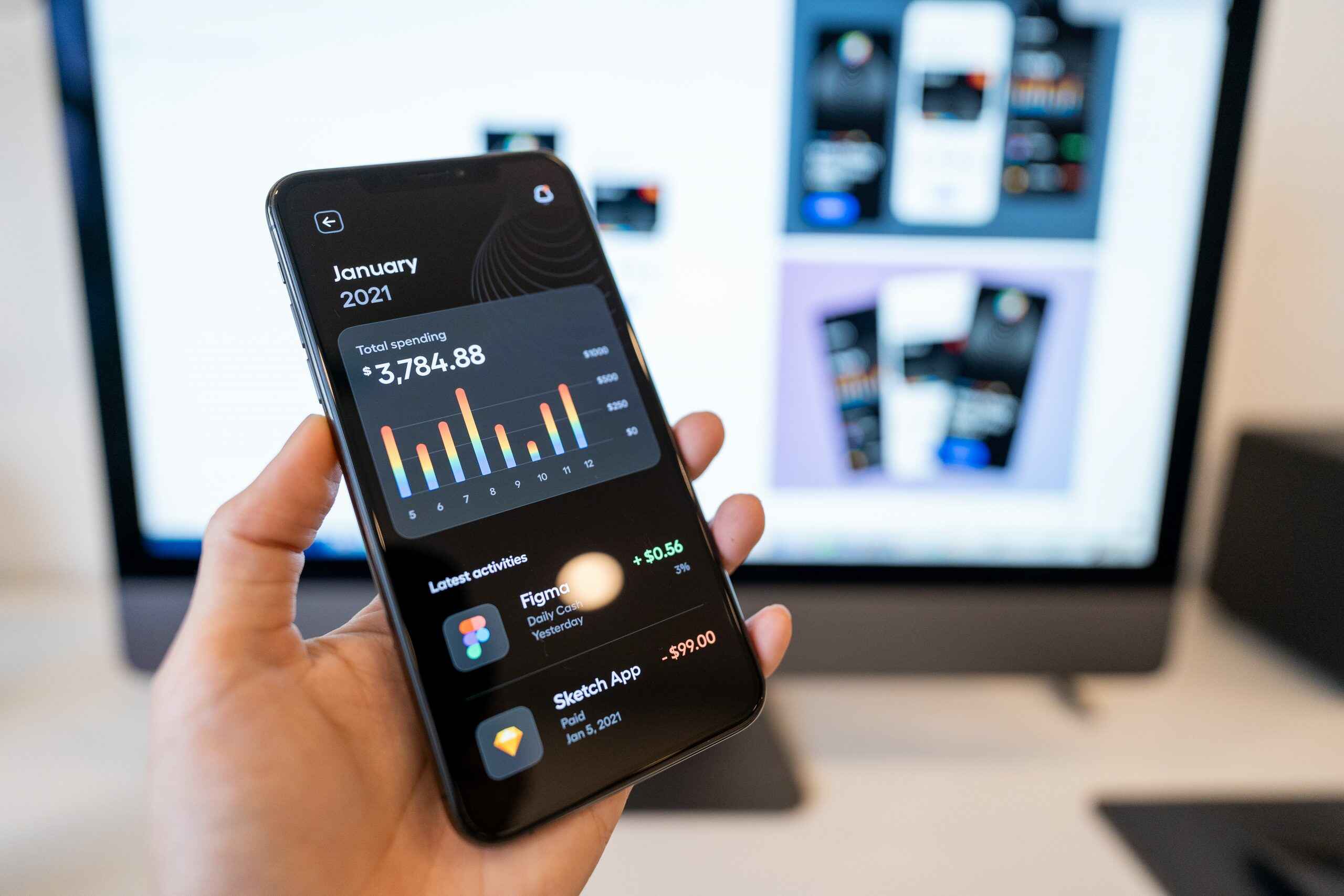Building a Software as a Service (SaaS) mobile application can be a game-changer for businesses in this digital era. As technology evolves, more and more people are relying on their mobile devices for various tasks, making it essential for businesses to have a strong mobile presence. In this article, we will guide you through the process of building a SaaS mobile application, from understanding its importance to maintaining it effectively. We at WeSoftYou have extensive expertise in software development, and we are here to share our knowledge with you.
What is a SaaS Mobile Application?
Before diving into the process, let’s start by understanding what exactly SaaS mobile applications are and why they are important. SaaS applications are software solutions that are hosted and maintained by a service provider and accessed over the internet. They offer businesses a flexible and cost-effective way to deliver their services to customers. Mobile applications, on the other hand, are designed specifically for mobile devices, providing a seamless user experience on smartphones and tablets.
Now, let’s delve deeper into the definition and importance of SaaS mobile applications. These applications combine the benefits of both SaaS and mobile technologies, revolutionizing the way businesses provide their services. By leveraging the power of the cloud and mobile devices, SaaS mobile applications allow businesses to provide their services through an easily accessible and user-friendly mobile interface.
One of the key reasons why SaaS mobile applications are important is the convenience they offer to users. With a mobile application, customers can access the services they need anytime, anywhere, with just a few taps on their smartphones or tablets. This level of convenience enhances the overall user experience and increases customer satisfaction.
In addition to convenience, SaaS mobile applications also expand the reach of businesses. By having a mobile presence, businesses can tap into the growing number of mobile users and target a wider audience. This increased reach can lead to higher customer engagement and ultimately, more revenue for the business.
Key Features of SaaS Mobile Applications
When building a SaaS mobile application, it is crucial to consider the key features that will make your application stand out from the competition. These features not only enhance the user experience but also provide added value to your customers. Let’s explore some of these key features:
- Seamless Integration with Existing SaaS Platforms: A successful SaaS mobile application seamlessly integrates with existing SaaS platforms, allowing users to access their data and services across multiple devices. This integration ensures a consistent user experience and enables users to seamlessly transition between desktop and mobile environments.
- Real-time Data Syncing: Real-time data syncing is another important feature of SaaS mobile applications. It ensures that any changes made on one device are instantly reflected on all other devices. This feature is particularly useful for collaborative work or when multiple users need access to the same data simultaneously.
- Push Notifications: Push notifications are a powerful tool for engaging users and keeping them informed. With push notifications, you can send timely and relevant updates to your users, such as new features, promotions, or important announcements. This feature helps to increase user engagement and retention.
- In-app Purchases: In-app purchases allow businesses to monetize their SaaS mobile applications by offering additional features or content for a fee. This feature provides an additional revenue stream and encourages users to upgrade to premium versions of the application, unlocking more functionality and value.
- Secure User Authentication: Security is paramount in any application, especially when it comes to handling sensitive user data. SaaS mobile applications should implement robust user authentication mechanisms to ensure that only authorized users can access the application and its data. This includes features such as two-factor authentication, biometric authentication, and encryption of user data.
By incorporating these key features into your SaaS mobile application, you can create a powerful and engaging mobile experience for your users. Remember, the success of your application depends not only on its functionality but also on how well it addresses the needs and desires of your target audience.
Planning a SaaS Mobile Application
Proper planning is the foundation of any successful project. Here we will discuss two crucial aspects of planning your SaaS mobile application: identifying your target audience and defining your application’s purpose.
Identifying a Target Audience
To ensure that your SaaS mobile application meets the needs of your audience, it is important to identify your target user group. Conduct market research and gather data to understand who your potential users are, what their pain points are, and how your application can address those pain points effectively. This will help you tailor your application’s features and user experience to meet their specific requirements.
Market research involves analyzing demographic data, such as age, gender, location, and income level, to create user personas that represent your target audience. These personas provide valuable insights into the preferences, behaviors, and motivations of your potential users. By understanding their needs and desires, you can design a mobile application that resonates with them.
Additionally, it is crucial to consider the technological proficiency of your target audience. Are they tech-savvy individuals who are comfortable using advanced features, or are they beginners who prefer a simple and intuitive interface? By understanding their technical skills, you can design an application that is user-friendly and accessible to all.
Defining an App’s Purpose
Clarifying the purpose of your SaaS mobile application is essential for designing and developing an effective solution. Clearly define what problem your application solves, what value it brings to users, and how it differentiates from existing solutions. This clarity will guide your development process and ensure that your application meets your business goals.
When defining your application’s purpose, consider the specific pain points your target audience is facing. Is there a gap in the market that your application can fill? Are there existing solutions that are not meeting the needs of users? By identifying these opportunities, you can position your application as a valuable solution that solves a real problem.
Furthermore, it is important to consider the scalability and flexibility of your application’s purpose. As your business grows and evolves, your application should be able to adapt and accommodate new features and functionalities. By designing a purpose that is future-proof, you can ensure the longevity and success of your SaaS mobile application.
SaaS Mobile App Design
The design of your SaaS mobile application plays a significant role in attracting and retaining users. A well-designed application not only looks visually appealing but also provides a seamless and intuitive user experience. Here are two important considerations when designing your application: user interface and user experience.
When it comes to user interface (UI), it’s crucial to create a visually appealing and cohesive design that aligns with your brand. Consider the color scheme, typography, and overall layout to ensure that your application reflects your brand identity. A visually pleasing UI can leave a lasting impression on users and make your application stand out from the competition.
In addition to a visually appealing UI, user experience (UX) should be a top priority. Your application should be easy to navigate, intuitive, and responsive. Users should be able to effortlessly move from one screen to another, without any confusion or frustration. By focusing on simplicity and usability, you can provide an enjoyable experience that keeps users coming back.
User Interface and User Experience
The user interface (UI) of your SaaS mobile application should be visually appealing, easy to navigate, and consistent with your brand. Consider the color scheme, typography, and overall layout to create an interface that is visually pleasing and showcases your brand identity. Moreover, prioritize user experience (UX) by ensuring that your application is intuitive, responsive, and provides a smooth flow from one screen to another. Focus on simplicity and usability to provide an enjoyable experience for your users.
When designing the UI, it’s important to consider the different elements that make up the interface. From buttons to icons, each element should be carefully designed to be visually appealing and easily recognizable. Consistency is key, as it helps users familiarize themselves with the application and navigate it effortlessly.
Another important aspect of UI design is the use of white space. White space, also known as negative space, refers to the empty space between elements. It helps create a sense of balance and allows users to focus on the important content. By strategically using white space, you can enhance the overall visual appeal and readability of your application.
Design Tools
From our experience, the choice of design tools can greatly impact the efficiency and quality of your design process. Utilize user interface design tools like Sketch, Figma, or Adobe XD to create wireframes, prototypes, and design assets. These tools provide collaborative features and allow you to iterate quickly, optimizing your design and achieving the desired UI/UX outcomes.
- Sketch is a popular choice among designers, offering a wide range of features and a user-friendly interface. It allows you to create high-fidelity designs and interactive prototypes, making it easier to visualize and test your ideas.
- Figma, on the other hand, is a cloud-based design tool that enables real-time collaboration, making it ideal for teams working remotely. With Figma, multiple designers can work on the same project simultaneously, streamlining the design process.
- Adobe XD is another powerful tool that offers a comprehensive set of features for UI/UX design. It allows you to create interactive prototypes with advanced animations and transitions, giving you a realistic preview of how your application will look and feel. With its integration with other Adobe Creative Cloud apps, you can easily transfer assets and designs between different software.
Ultimately, the choice of design tools depends on your personal preference and the specific requirements of your project. Experiment with different tools and find the one that best suits your needs. Remember, the right design tools can significantly enhance your productivity and help you create a visually stunning and user-friendly SaaS mobile application.
SaaS Mobile Application Development
Once the planning and design stages are complete, it’s time to dive into the development phase. This is where the magic happens and your SaaS mobile application starts to take shape. In this expanded version, we will explore two important aspects of developing your SaaS mobile application: selecting the right development platform and understanding the development process.

Selecting the Right Development Platform
The choice of development platform is a critical decision that can greatly impact the success of your SaaS mobile application. There are various factors to consider when making this choice, such as your target audience, budget, and required functionalities.
If you prioritize performance and want to leverage device-specific features, native development is the way to go. Native development involves using programming languages like Swift (for iOS) or Kotlin (for Android) to build your application. This approach allows for better performance and seamless integration with the operating system. However, it does require separate development efforts for each platform.
On the other hand, if time and budget are considerations, cross-platform development frameworks like React Native or Flutter provide an attractive alternative. These frameworks allow you to develop a single codebase that works on both iOS and Android platforms. While there may be some trade-offs in terms of performance and access to device-specific features, the advantage of faster development and cost savings can outweigh these factors.
Understanding the Development Process
The development process is a journey that takes your SaaS mobile application from ideation to deployment. It involves several stages, each with its own set of tasks and considerations.
- Gathering Requirements and Roadmap: Define the application’s scope, key features, and development timeline. A clear roadmap lays the foundation for a successful development process.
- Application Architecture Design: Make decisions on the overall structure, including frameworks, libraries, and databases. A well-designed architecture ensures scalability, maintainability, and optimal performance.
- Code Development with Agile Practices: Implement the development tasks in smaller, manageable sprints using agile practices. This iterative approach allows flexibility and adaptability throughout the development process.
- Continuous Testing and Performance Optimization: Conduct ongoing testing, debugging, and performance optimization. Regular testing identifies and addresses issues early on, ensuring a high-quality end product. Optimization guarantees smooth and efficient application performance.
- Thorough Testing and Quality Assurance: Execute comprehensive testing on various devices and platforms to ensure compatibility and functionality. Conduct user acceptance testing for feedback, making necessary refinements before deployment.
As you can see, developing a SaaS mobile application is a complex and multi-faceted process. It requires careful planning, thoughtful decision-making, and meticulous execution. By selecting the right development platform and understanding the development process, you are setting yourself up for success in bringing your SaaS mobile application to life.
Testing Your SaaS Mobile Application
Quality assurance plays a significant role in the success of your SaaS mobile application. Proper testing ensures the reliability, functionality, and security of your application. Here we will discuss the importance of quality assurance and the types of testing for SaaS mobile applications.
Quality Assurance
Quality assurance (QA) is essential to identify and fix bugs, optimize performance, and ensure a seamless user experience. Conduct rigorous testing to ensure that your application functions as intended, provides accurate outputs, and handles user interactions correctly. QA not only improves the reliability of your application but also enhances your brand’s reputation and increases customer satisfaction.
Testing for SaaS Mobile Applications
Testing your SaaS mobile application involves various types of testing, including functional testing, compatibility testing, performance testing, and security testing. Functional testing ensures that your application functions correctly, while compatibility testing examines its performance across different devices and operating systems. Performance testing evaluates the speed and stability of your application under different conditions, whereas security testing detects vulnerabilities and protects user data from potential threats.
Deploying Your SaaS Mobile Application
Once your SaaS mobile application is developed and tested, it’s time to deploy it to the market. Here we will discuss two important aspects of the deployment process: choosing the right deployment platform and understanding the deployment process.
The Right Deployment Platform
The choice of deployment platform depends on your target audience and business goals. For iOS applications, you can deploy your application through the Apple App Store, which provides access to millions of iOS users. For Android applications, the Google Play Store offers a vast user base. Additionally, consider alternative platforms such as enterprise app stores or mobile device management (MDM) solutions if your app is intended for internal use within an organization.
The Deployment Process
The deployment process involves several steps, including preparing your application for release, acquiring developer accounts, configuring necessary app details, and submitting your application for review. Each platform has its specific guidelines and requirements that need to be adhered to. Ensure that your application meets these guidelines and policies to increase the chances of getting approved quickly. It is also crucial to have a rollout strategy and plan for post-deployment updates to address user feedback and continuously improve your mobile application.
Marketing Your SaaS Mobile Application
Marketing plays a crucial role in making your SaaS mobile application successful. Here we will discuss two important aspects of marketing your application: strategies for promoting your application and measuring the success of your marketing efforts.
Strategies for Promoting Your Application
Promoting your SaaS mobile application involves various strategies, including digital marketing, social media marketing, content marketing, and influencer campaigns. Leverage digital channels such as search engines, social media platforms, and professional networks to reach your target audience. Create engaging and informative content to showcase the value of your application and its benefits to potential users. Collaborate with industry influencers to increase your application’s visibility and credibility.
Measuring the Success of Your Marketing Efforts
Measuring the success of your marketing efforts helps you understand the effectiveness of your strategies and make data-driven decisions to improve your results. Use analytics tools to track user engagement, downloads, conversion rates, and other key performance indicators (KPIs). Analyze this data to identify trends, measure the impact of your marketing campaigns, and optimize your strategies accordingly.
Maintaining Your SaaS Mobile Application
Maintaining your SaaS mobile application is crucial to ensure its longevity and user satisfaction. Here we will discuss two important aspects of maintaining your application: the importance of regular updates and handling user feedback and complaints.
Importance of Regular Updates
Regular updates are essential to keep your SaaS mobile application functional, secure, and aligned with the latest technologies and user expectations. Update your application to fix bugs, introduce new features, and adapt to changes in the operating systems or third-party integrations. Regular updates not only enhance user experience but also demonstrate your commitment to providing a reliable and continuously improving solution.
Handling User Feedback and Complaints
User feedback and complaints provide valuable insights into your application’s strengths and weaknesses. Actively listen to your users, respond to their feedback, and address their complaints in a timely and professional manner. Implement a system to track and prioritize user feedback, ensuring that reported issues are resolved and valuable suggestions are considered for future updates. Engaging with users and demonstrating that their feedback is valued will foster loyalty and help you improve your application based on user needs.
In conclusion, building a SaaS mobile application requires careful planning, designing, developing, testing, deploying, marketing, and maintaining. We at WeSoftYou, with our expertise in software development, understand the intricacies involved in building successful SaaS mobile applications. Whether you are a startup founder, a CTO, or a CEO, we can provide you with a tailored solution that meets your business needs. Contact us for a free consultation or project estimation and let’s transform your ideas into a powerful mobile application.
FAQ
WeSoftYou has a proven track record in software development, including building innovative SaaS mobile applications. Our team of experienced developers and designers are dedicated to delivering high-quality solutions that exceed client expectations. We prioritize customer satisfaction and believe in long-term partnerships.
WeSoftYou specializes in developing mobile applications using native technologies such as Swift and Kotlin, as well as cross-platform frameworks like React Native and Flutter. Our expertise ensures that your application is developed using the most suitable technology for your specific needs.
The development timeline depends on various factors, such as the complexity of your application, the number of features, and the availability of required resources. WeSoftYou follows agile development practices, which allow for flexibility and efficient project management. Contact us for a free project estimation based on your specific requirements




















